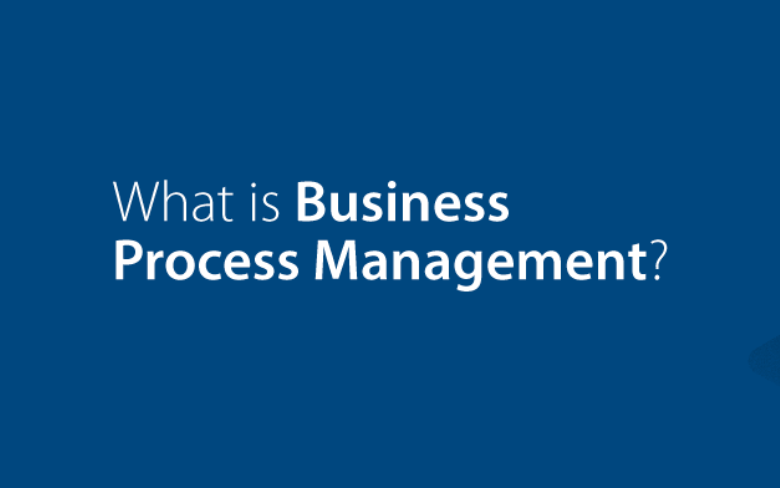In a company, departments from sales to human resources are responsible for managing paperwork, data, and other vital inputs to meet the quota of their responsibilities or more. Business Process Management automates and systematizes the repeatable tasks that hinder the pipeline of productivity.

It is also defined as the clear window into disparate activities, bringing the functions altogether under the company’s automated, single, and process-driven umbrella.
Four Basic Methodologies.
- Optimization – Make your company’s day-to-day processes more efficient, cost-wise, and control application errors and data entry.
- Managing – In each process, gain insights about the business data and the participants’ affective processes.
- Automating – evolve your company’s processes from manual to electronic processes wherein web forms collect data and effectively transfer from/to your original third-party applications.
- Modeling – Measure the needed cost and time and map out your process to effectively execute the needed processes.
Benefits of Business Process Management Solutions
A BPM solution to the needs of a company starts with aligning the business goals through using an eye moving towards the creation of value by initiating process change.
This then leas to a thorough design and understanding of representative processes following a standard framework of an industry such as the ITIL, COBIT, COSO, and more typically.
A foundation based on BPM provides for the business processes complete lifecycle management, integrates across technologies, and embeds people, technologies, and processes’ efficiency.
Lots of today’s market point solutions are unable to make solutions as future proof. Compared to specific point solutions, document management, ERP, and framework-only based solutions, BPM solutions are built and designed to handle future requirements efficiently and with the flexibility that.
- Provides for growth, executes an integrated business strategy, manages change, and maximizes cost reductions.
- Extends control management across the technology and enables integration of cross-enterprise to scale.
- Allows expansion from processes that are department-only to a broader BPM to improve the business value.
- Effectively manages change as laws, requirements, regulation, and processes change.
- It provides a structured yet can be customized environment for extension of industry and process requirements in automation to reduce training costs.
Stages of Business Process Management (BPM)
An organization is defined as a group of people that are cooperating conspicuously. Here are the things that you can start with to understand the barriers when cooperating in an organization. Identify the roadblocks of productivity, as well as start modeling automated workflows that are highly productive.
Stage 1: Plan the BPM process
In this stage, you must start by gathering and meeting the main stakeholders of your company. These people are vital since, as main stakeholders, the transformation of your organization will not be effective without their buy-ins.
Train your staff and espouse the benefits of a new workflow. You will also need assistance from key leaders in managing the transitions.
What processes are the prime automation targets?
Begin with a primary processor those central to the offering of product’s or service’s production. For software, is there any bottleneck, or its too many in securing sign-offs for the new iteration of service patches’ launch?
Were the deals delayed due to the manual transfer done by the sales team of customer data to a final agreement from CRM?
Next, you need to look at your secondary processes. These refer to the supporting processes that help to ensure the continuous and smooth function of your organization.
Are there exceeding amounts of choke-points that make the flow of employee time-off requests slow? Does the marketing team of your company have never gone live trove of social media materials?
In addition to that, you must step outside the C-Suite for you to gain insights from the members of each team that juggles the processes first hand. They have an understanding of the ins-and-outs of every step along the way, as well as can give useful elucidation on the frontlines work.
Step 2: Diagram and Design your BPM
Analyze and make a list of the individuals and actions responsible for keeping the process continually moving forward.
Outline the sequence of events visually essential to achieve the desired goals. You can begin with a sketch of the process or narrative with an illustrative chart or another diagram. Below are the factors that you must consider.
- External Connections: Do the company’s processes need to be linked on an outside database such as citizenship checks or credit scores? If your team accesses the external records manually for information verification, make a list for the integration of potential candidates.
- Required Approvals: Who needs approving the process stages before the next rung wants it to be handed down?
- Approval Scenarios: When a person approved the step, what will happen then? What if they rejected it? You need to bear in mind the outcomes and identify the possible results of each.
- Regulatory Timeframes: Is it required to submit a form in the regulatory body within a timeframe? Who will receive the notification once it fell behind schedule? You need to be precise as much as possible to prevent confusion. If the diagram is detailed, it will result in an efficient ultimate workflow.
- Storage Requirements: What forms or digital framework does the system need as storage for later access? Examples of this are customer paperwork such as W2, driver’s license, or loan application.
Step 3: Execution of the Process
Here, you are now going to implement the designed processes. Make use of user-friendly platforms such as ProcessMaker so you can transfer the diagram or narrative from the second step to become a fully functioning automated process.
Aside from that, the drag-and-drop and no-code tools of ProcessMaker are making the process easy for anyone.
This includes even those who don’t have enough experience in IT, which are about executing and designing apps and forms needed for the launching of new process workflow.
Step 4: Monitor and Measure
Automated workflows are not set-it-and-forget-it. After making the process live, you will now need to monitor the process continuously. Look for any bottleneck or missing steps. Also, look if there are still manual interventions needed.
Step 5: Refine
Fine-tuning is required in every process. After reviewing the performance back in the fourth step, you can now implement necessary improvements and changes. Make sure that management is constantly evolving. Refining the process is important, just like the implementation process in the first place.
Join 25,000+ smart readers—don’t miss out!







